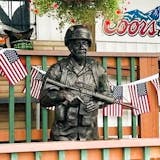Zygi Wilf could not wait to fire Mike Tice after he coached an undertalented and injury-plagued Vikings team to a 9-7 record in 2005. Wilf promptly hired Brad Childress in a change that did not accomplish what Zygmunt hoped.
Robert Bruininks, the University of Minnesota president, and Joel Maturi, his athletic director, could not wait to fire Glen Mason after his team blew a huge lead in a meaningless bowl game. They hired Tim Brewster as a replacement and wound up going severely backwards with the football program.
Norwood Teague, Maturi's replacement as athletic director, could not wait to fire Tubby Smith in March 2013 after the Gophers beat UCLA in the first round and then lost to Florida in the NCAA men's basketball tournament. After many turndowns, Teague wound up with young Richard Pitino, who just coached the Gophers to the worst season in school history.
Tice was fired 20 minutes after the last game on the schedule. Mason and Smith were fired soon after getting off the team plane.
There could be a lesson here: Haste might be a waste.
Or better yet: Owners and administrators better be confident they have a line on an upgrade before making an immediate decision to fire a coach.
Tice was in his fourth season and growing in competence. Mason and Smith were veterans and more than competent. And they were replaced on impulse, more than with a solid plan for finding a replacement.
It would appear that Glen Taylor, after many missteps in approving coaches in his 22 years as Timberwolves owner, did not fire Sam Mitchell on Wednesday without having done proper homework on how to go big for a replacement.



